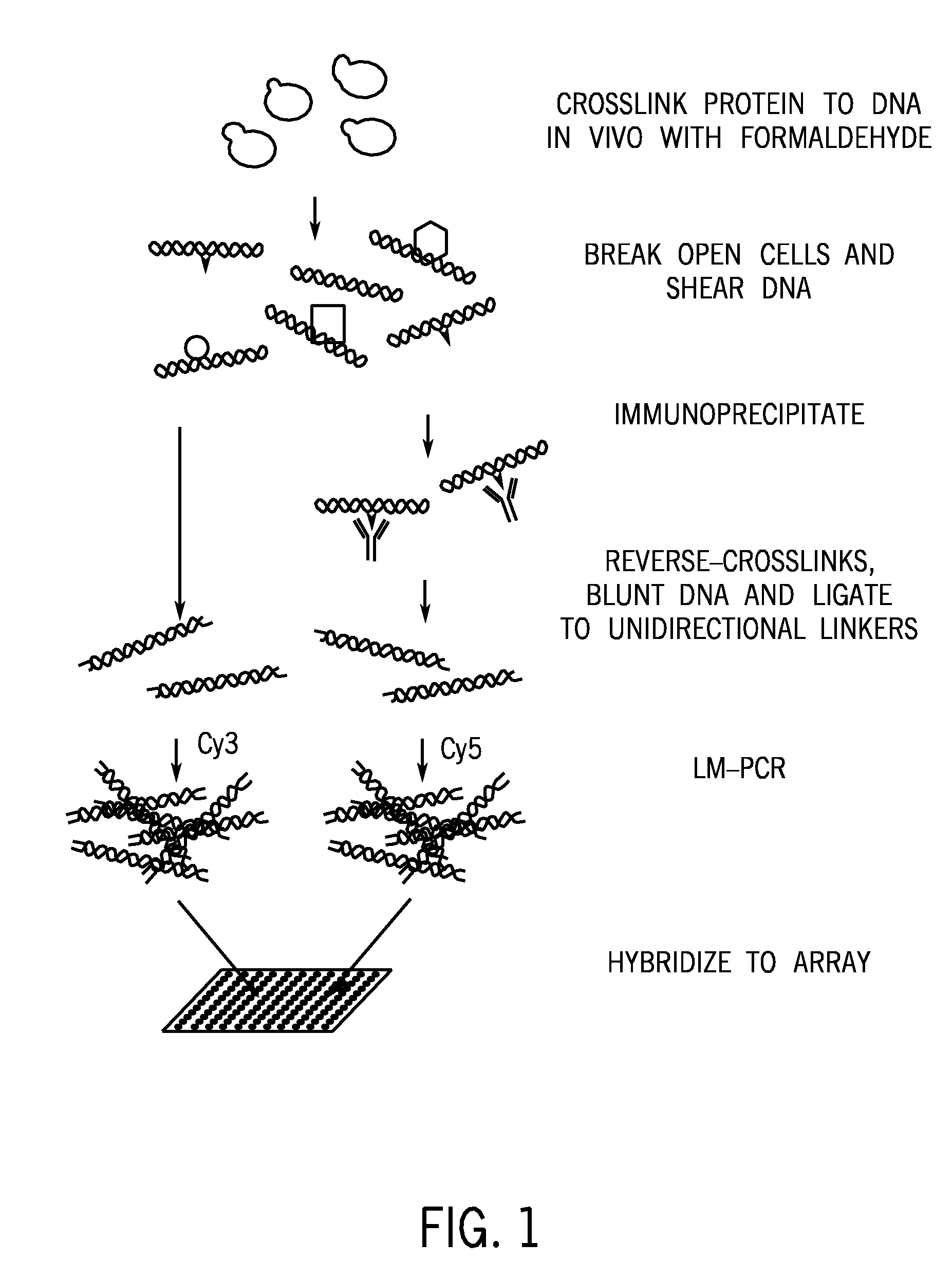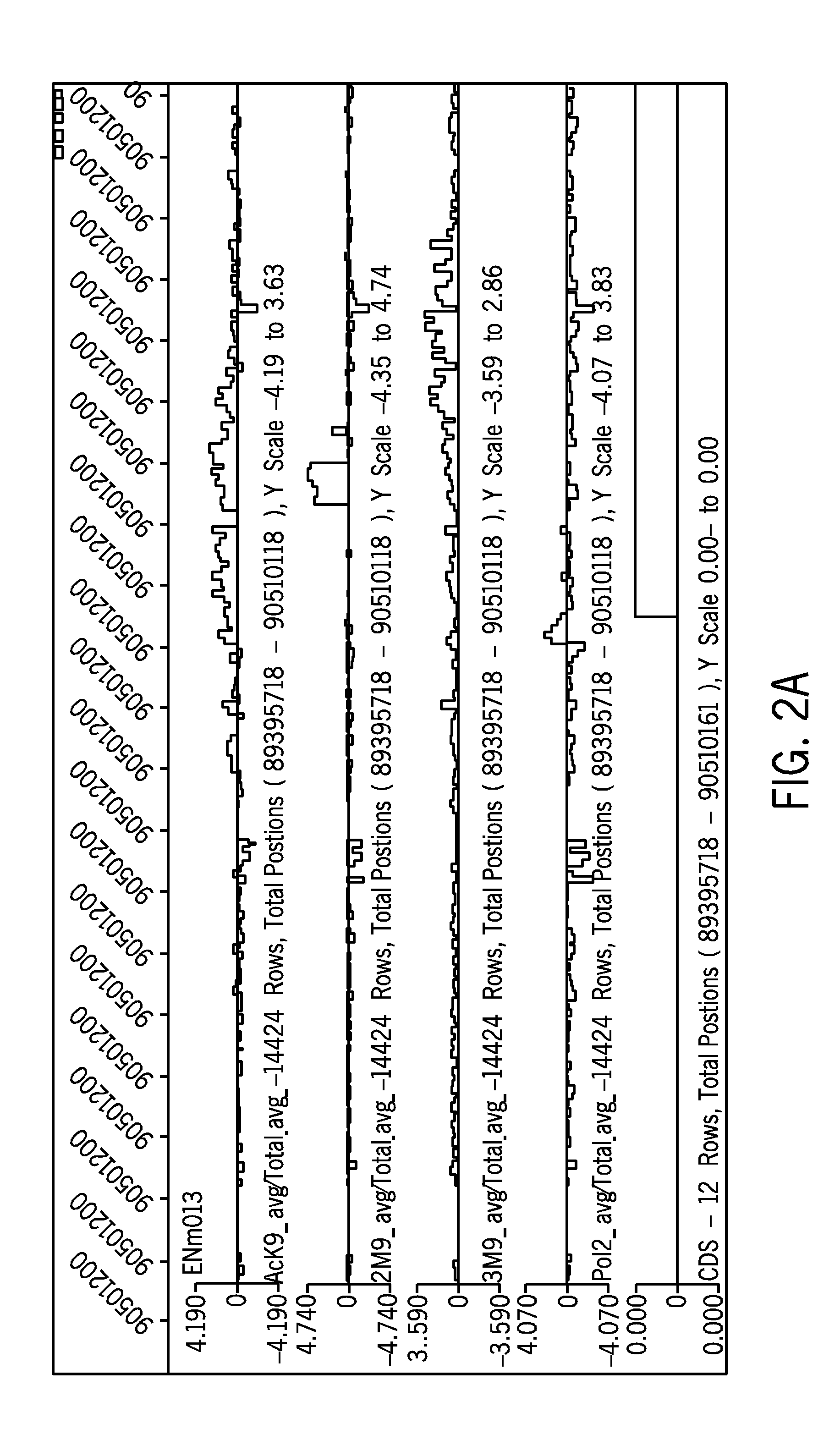Method for identification and monitoring of epigenetic modifications
a technology of epigenetic modification and monitoring method, which is applied in the field of method for identification and monitoring of epigenetic modifications, can solve the problems of potential barrier, significant risk factor of aneuploidy itself, and imbalance between maternal and paternal chromosomes,
- Summary
- Abstract
- Description
- Claims
- Application Information
AI Technical Summary
Benefits of technology
Problems solved by technology
Method used
Image
Examples
example 1
ChIP Chip™ for Discovery and Monitoring of Imprinted Genes
[0065] In order to determine which region of a genome contains imprinted genes, applicants performed ChIP Chip™ experiments to identify regions having overlapping open and closed chromatin markers, by virtue of their association with preferably, modified histone markers such as AcK9H3; 3MeK9H3; 2MeK9H3; and RNA polymerase II.
[0066] Briefly, to perform ChIP-chip™, cells were treated chemically to cross-link DNA binding proteins to their binding sites. DNA from these cells was isolated, fragmented and enriched by immunoprecipitation with antibodies directed to the modified histones and RNA polymerase of interest (see generally, Ng et al., Genes Dev. 16, 806-819 (2002); Wyrick et al., Science 290, 2306-2309 (2002); Weinmann, et al., Genes Dev. 16, 235-244 (2002)).
[0067] This enriched population was then amplified by LM-PCR. As depicted in FIG. 1, the present method is not limited to amplifying individual DNA regions by perfo...
example 2
Microarray Analysis of the Co-occurrence of Silenced and Active Chromatin Marks as a High Throughput Method for Identifying Novel Imprinted Genes
[0070] Applicants conducted a series of microarray experiments to efficiently screen for or identify coincident “active” and “silent” chromatin marks, with or without the presence of a CpG island or GC-rich sequence, regardless of the methylation state of that CpG island in the particular cell type.
[0071] Chromatin Immunoprecipitation (ChIP) was performed on cultured HeLA cells and 293 cells utilizing the well known ChIP protocol from the Farnham lab published electronically and publicly available on Dec. 12, 2005 at http: / / genomecenter.ucdavis.edu / farnham / farnham / protocols / chips.html, combined with a ligation mediated PCR technique (LMPCR) based on the method of Ren et al. (2000) Science. 290, pg. 2306 (both of which are incorporated by reference in their entirety).
[0072] The materials to conduct the ChIP...
PUM
| Property | Measurement | Unit |
|---|---|---|
| chromatin structure | aaaaa | aaaaa |
| gel electrophoresis | aaaaa | aaaaa |
| area | aaaaa | aaaaa |
Abstract
Description
Claims
Application Information
 Login to View More
Login to View More - R&D
- Intellectual Property
- Life Sciences
- Materials
- Tech Scout
- Unparalleled Data Quality
- Higher Quality Content
- 60% Fewer Hallucinations
Browse by: Latest US Patents, China's latest patents, Technical Efficacy Thesaurus, Application Domain, Technology Topic, Popular Technical Reports.
© 2025 PatSnap. All rights reserved.Legal|Privacy policy|Modern Slavery Act Transparency Statement|Sitemap|About US| Contact US: help@patsnap.com



